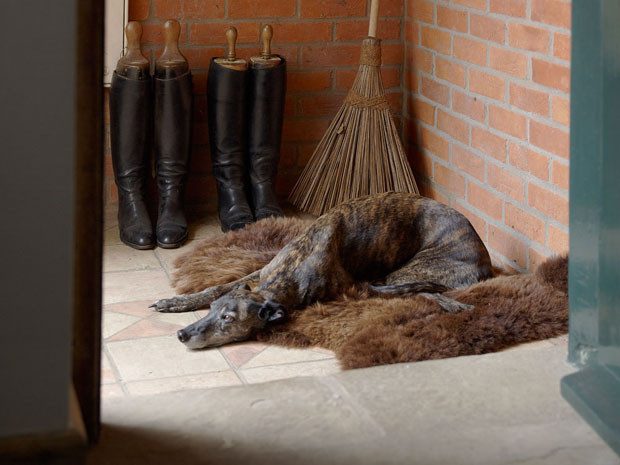How to help your dog get a good night's sleep
Our dogs need good quality sleep to heal, restore and rejuvenate their bodies. Kate Mallatratt explains how you can help your dog get a good night’s rest...

The average dog spends nearly ten hours in quiet sleep (non-REM) and around three and a half hours in active sleep (REM) in any 24 hour period, while puppies sleep up to sixteen hours a day.
Many factors can affect sleep quality. Consider your dog’s sleeping area carefully. His bed should be placed in a quiet part of the house, away from everyday hustle and bustle, constant noise and drafts.
Get the light right
At night, the room should be pitch black. If your dog's sleeping area is too bright there is less efficient production of the hormone melatonin, which can adversely affect circadian rhythm (body clock).
Electrical appliances give out strong beams of light and can illuminate a room. Please consider the effects of light pollution when choosing your dog’s resting area and, if necessary, takes steps to reduce the light coming from appliances and windows.
Consider room temperature too. A dog’s body temperature is marginally higher than ours and dogs generally prefer a cooler environment than we do.
Allow them on your bed?
Should your dog sleep on your bed? It depends. Sleeping locations are potential territories to be defended and if your dog has any history of guarding beds or growls when he is moved, he should not be allowed to sleep on your bed.
If his hostility makes you move away, his behaviour has been successful in his eyes and will be repeated. Do not tell your dog off for growling because he will not understand what he has done ‘wrong’, and this may lead to increased guarding if he feels threatened. He isn’t being naughty, he is simply telling you that your bed is a particularly valuable resource to him.
In this case it is best to avoid conflict situations where your dog might win by restricting access to bedrooms. On the other hand, if your dog will happily sleep on your bed and jump off when asked, there is no reason why he can’t make himself comfortable. Never wake a sleeping dog by touching him as you may startle him; always call him to you.
Choose the right bedding
Check the suitability of your dog’s bed. Ensure it is large enough for him to stretch out, allowing complete relaxation for deep sleep. Sleeping in a bed that is too small can cause musculoskeletal problems. There are many types of beds on the market to suit all needs. An elderly dog may need a firm bed for example, while a terrier may enjoy a ‘sleeping bag’ style tunnel bed designed for burrowing. Crates covered with a blanket make good beds. Vetbed bedding is excellent for lining beds and crates, as it is warm, can be cut to size and is easily laundered.
For the ultimate luxury, sheepskins make warm, soft dog beds that naturally repel dirt and liquids. With proper care, they will last a lifetime: wash using a wool detergent, air dry and brush out any mats with a coarse wire brush to restore the pile.
With a little forethought, care and attention you can improve your dog’s sleep quality and enhance his overall wellbeing.
__________________________________________________________________
This article was first published in East Devon One Magazine - one-mag.co.uk
AUTHOR BIO
Kate Mallatratt is a canine behaviourist and author. She is a founder member of International Canine Behaviourists and member of Pet Professional Guild for force-free training, and runs her business, Contemplating Canines, from East Devon, UK.
She takes a holistic approach to her own dogs’ care, feeding a raw diet, and using homeopathy and chiropractic to maintain their health and wellbeing. Find out more at: www.contemplatingcanines.com
